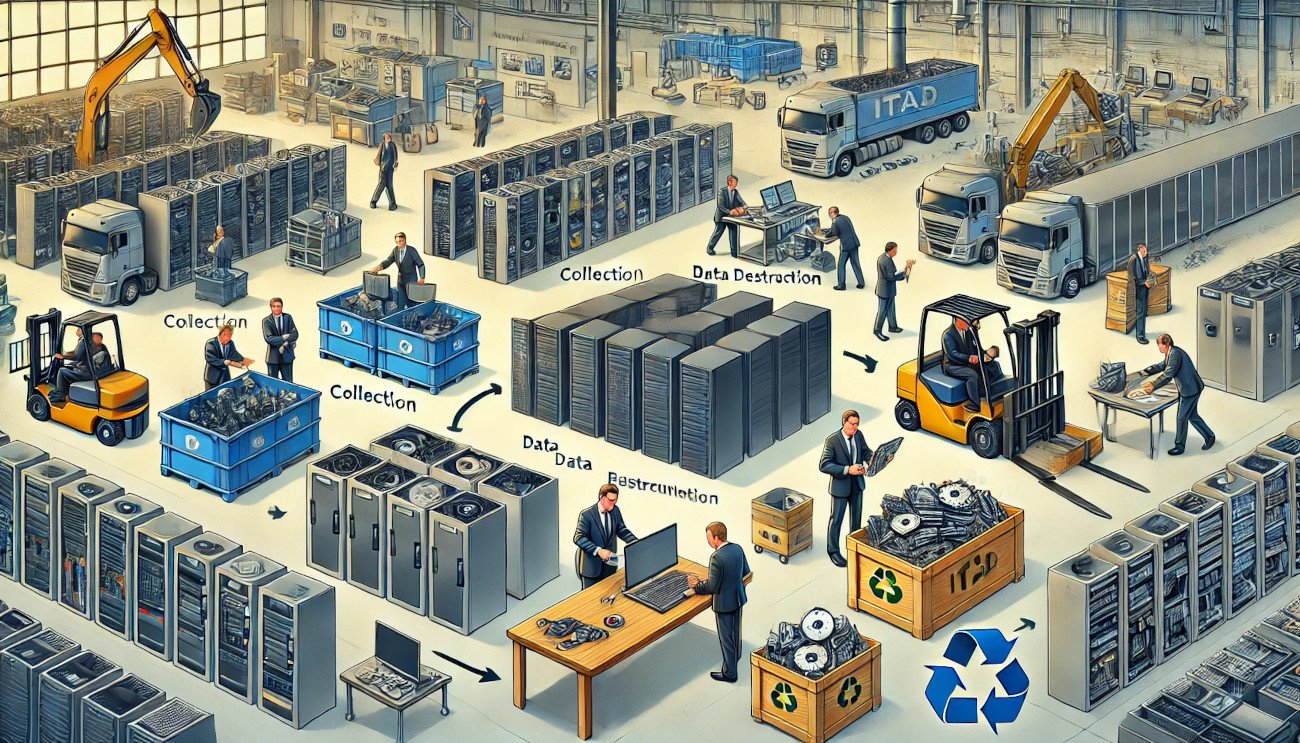
In today’s rapidly evolving digital landscape, managing the lifecycle of IT assets responsibly and securely is crucial. IT Asset Disposition (ITAD) represents a critical phase in this lifecycle, dealing with the safe and efficient disposal of obsolete or unwanted equipment. This guide explores the significance of ITAD, offering insights into best practices, compliance requirements, and emerging trends that shape its implementation.
Understanding ITAD
Components of ITAD
ITAD encompasses several critical steps to protect data integrity and minimize environmental impact. The key components include:
- Collection: Gathering and logging IT assets eligible for disposition.
- Data Destruction: Employing methods such as degaussing, shredding, or software wiping to erase data securely.
- Refurbishing: Repairing and updating usable equipment for resale or donation.
- Recycling: Salvaging valuable materials from obsolete equipment.
- Disposal: Disposing of assets in an environmentally responsible manner.
Compliance and Regulations
Navigating the complex web of compliance and regulations is vital. Laws such as the General Data Protection Regulation (GDPR) and the Health Insurance Portability and Accountability Act (HIPAA) dictate stringent data handling and privacy standards. Adhering to these regulations ensures legal compliance and protects organizational reputation.
Planning for ITAD
IT Asset Lifecycle
Effective ITAD starts with understanding the IT asset lifecycle, from procurement to disposal. Integrating ITAD processes early in the lifecycle aids in seamless transitions when assets reach end-of-life.
Policy Development
Creating a comprehensive ITAD policy is foundational. This policy should align with broader IT security protocols and detail specific practices for each phase of the disposition process, ensuring consistency and compliance across the organization.
ITAD Best Practices
Vendor Selection
Choosing the right ITAD vendor is paramount. Ideal vendors hold certifications like R2 (Responsible Recycling) and e-Stewards, which indicate compliance with global environmental and data security standards.
Data Destruction
Data destruction is a critical component of ITAD. Methods vary in effectiveness and are chosen based on the sensitivity of the information and the final disposition of the hardware.
Audit and Documentation
Maintaining detailed records and audit trails for disposed assets ensures traceability and compliance. This documentation is crucial for verifying every asset’s secure and lawful handling.
Challenges in ITAD
Logistical Challenges
Handling the logistics of ITAD, from transportation to final processing, can be daunting. Efficient logistics reduce costs and mitigate the risk of data breaches during transit.
Technological Changes
The rapid pace of technological advancement can render devices obsolete more quickly, complicating the ITAD process. Staying ahead requires continuous updates to ITAD policies and practices.
International Considerations
For global organizations, ITAD must be managed across various jurisdictions, each with its own legal and regulatory frameworks. This complexity requires a well-orchestrated approach to ensure global compliance.
Future Trends and Innovations
Technology in ITAD
Emerging technologies like blockchain offer promising solutions to enhance traceability and security in ITAD processes. Similarly, artificial intelligence can automate data destruction and asset management, increasing efficiency and reducing human error.
Sustainability in ITAD
As environmental concerns take center stage, sustainable ITAD practices gain importance. Innovations in recycling technologies and strategies to extend the life of IT assets contribute to more sustainable practices.
Conclusion
IT Asset Disposition is a critical function that requires meticulous planning, robust policies, and strict adherence to best practices and regulations. By embracing strategic ITAD practices, organizations can achieve greater security, compliance, and sustainability, turning potential risks into opportunities for value recovery and environmental stewardship.

